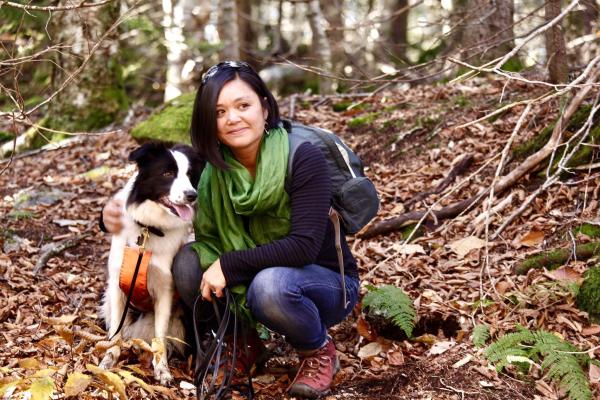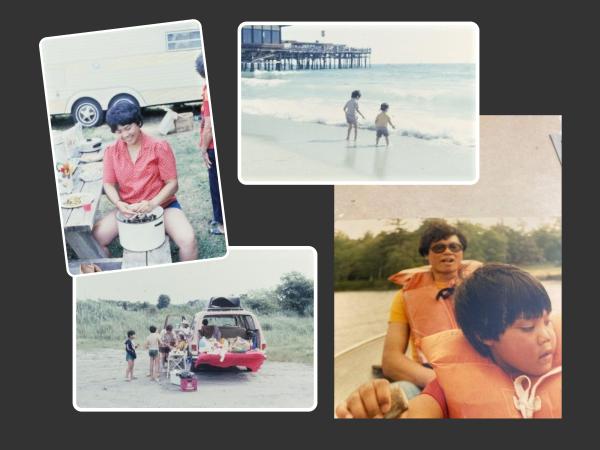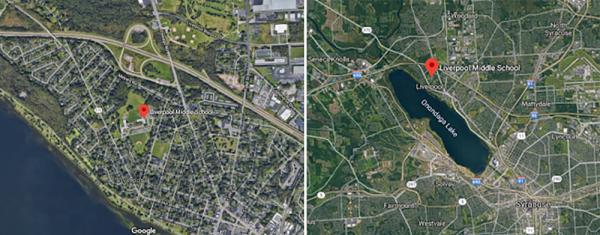Hi Aimee,
Your story touched me deeply. I loved "Braiding Sweet Grass" by Robin Wall Kimmerer. We let ourselves go so far astray from the most essential and perishable gifts that Nature provided us with, in the constant quest for material comfort and wealth.
Here at UVM I do see the potential for the change you speak of in our Students. Each year the conversations and themes about connecting with the Natural World, and with each other, grow more profound and more realizable. I see small signs of Hope in progress every day. And it is Educators like yourself who are fueling this tangible Hope being put into action.
Sincerely,
Jacques-Paul Marton
Rethinking Equity in the Outdoors
An earlier version of this talk was given at the Green Schools Educators Summit in February 2021 to a group of educators considering this topic. It preceded presentations by three practitioners in the field who spoke to the current research on the impact of nature experiences on well-being and academic achievement, creating school-wide change, and enacting the topic through the curriculum.
So, as educators and community members, how do we do that? Researchers and experience tell us that a child’s early positive experiences engaging in the natural world is an important factor in that child developing environmental behaviors in adulthood. I would also add that we need to have a sense of belonging to and fall in love with the places in which we dwell, if we are to heal them. Let’s pause for a moment to consider how you and I developed our own abilities to be in relationship to place.
I’m a first-generation Filipina-American settler in this land. My parents came here for work in the late 1960s and raised their four children in the suburbs of Upstate New York, while also supporting their extended family back home. We were outsiders there, and I know I never developed a sense of belonging in the place where I grew up, in a place and time where assimilation into whiteness was the expectation, and our schooling did nothing to counter the constant messaging to people of color that “you don’t belong.” I would later understand that the possibility that someone like me could feel that they belonged was yet unimagined, an unexamined conundrum for my peers and the community.
But I had the advantages of growing up in a stable middle class family, and my parents had the interest and ability to spend time with us outdoors. At home we rode bikes, played in the snow, picked apples, and tended the garden. We went camping and hiking and fishing and swimming in the ocean. We had regular picnics and BBQs by the lake with close family friends.
My experiences were — and are — a counter story to the dominant imagination of what kinds of people are recreating outdoors together. When I hear the words skiing and hiking and camping, I know that my media-soaked American mind immediately conjures up images of joyful able-bodied white people communing with nature. Take a moment to recognize that limitation on our collective imagination. I am grateful to my parents for planting in me the seeds of joy and wonder and reverence for the natural world. I am especially grateful because I know that to have this kind of access to the outdoors is a privilege, but it shouldn’t be.
At school it was a different story. My middle school is just blocks away from the shores of a freshwater lake. Yet throughout my entire 13 years of public school education, I recall going outside for learning only two times: once in 4th grade, on a field trip to the Erie Canal, and once in 9th grade Earth Science class to a graveyard down the street from the high school. For me, school was a place that was disconnected from the natural world and all that was happening beyond those classroom windows.
To contextualize this a bit more, the lake closest to my childhood home is Onondaga Lake, a lake that in her book, Braiding Sweetgrass, Robin Wall Kimmerer has called “the Sacred and the Superfund.” Unknowingly, I grew up on the ancestral lands of the Onondaga people. The shores of the toxic lake where we picnicked and rode our bikes is the site where 5 Indigenous nations came together as the Iroquois or Haudenosaunee Confederacy and agreed to live by the Great Law of Peace. It is also the site where generations of chemical companies dumped their toxic waste, caking the shoreline with white sludge and coating the bottom of the lake with mercury. In 2006, the Onondaga Nation filed a land rights action with the federal government for the legal title to their homeland, a move that would have enabled them to steward the land and to bring about healing between the land, lake, and all the people who live in the watershed. In 2010, the federal court dismissed this case. (Kimmerer, pp 320-322)I share this because I see this as a tragic missed opportunity for our schools and our community. What if my schools had centered interconnectedness, sense of place, and the ability for each of us to make a difference? What if while generations of industrial workers were dumping toxic waste into the sacred lake, schools were also nourishing a love of place, and a sense of responsibility to our natural and human communities in generations of school children? Would there have been greater support from the community and within the government for the land rights suit of the Onondaga Nation? How would the outcomes have been different?
As educators and community members, this is our responsibility to our shared future. We know that who gets access to positive experiences in the natural world is limited by systems of generational inequities and biases. Schools — and childhood — offer us amazing levers for change. Each year we get the chance to reimagine what is possible for our youth today and for the future we are currently creating. Each day is an opportunity to harness the power of school culture and practice to instill a deep sense of community and belonging for each and every child.
I challenge you to push on the edges of your own vision of who belongs in relationship with the natural world and who the agents of change might be. In the words of Ebony Elizabeth Thomas (2019), who writes about the interplay of race and imagination in literature, to make our world anew requires the emancipation of the imagination itself.
Check out our 2021 summer professional learning programs exploring these issues of equity and place (and many others).
Shelburne Farms is intentionally and actively applying an equity lens to our program design and implementation, because we believe that equity and social justice are essential to to educating for sustainability for a thriving society. The outcomes can be seen and felt in our professional learning programs, as well as in new and emergent work. Currently, we are engaging with long-standing partner organizations and a diverse group of educators, in a process of questioning and reimagining our understanding of place-based education with justice, diversity, equity, and belonging in mind.
References:
Kimmerer, R. W. (2013). Braiding sweetgrass. Milkweed Editions.
Thomas, E. E. (2019). Dark fantastic: Race and the imagination from Harry Potter to the Hunger Games.



